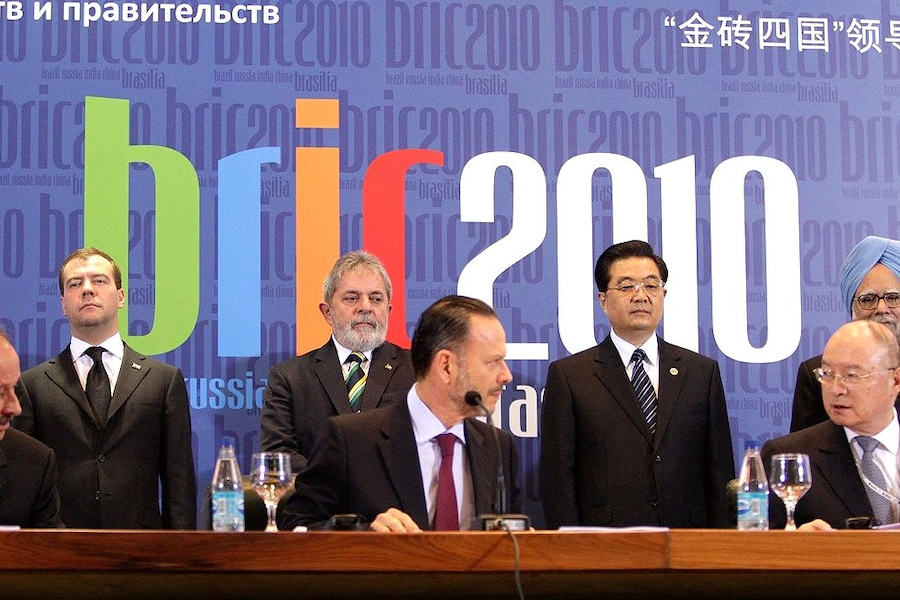
Do Country Acronyms have a Meaningful Place in a Dynamic World?
When Goldman Sachs first coined the term “BRICs” in 2001, it did so on the assumption that these four countries were going to heavily influence the direction of the global economy. It turned out that China was much more influential than any of the other three, and that Brazil well underperformed the others based on its decade-long average GDP growth rate of approximately 3.5%. Since then, the dynamics of the global economy have continued to change significantly, with the rise of ‘the rest’ becoming a dominant feature of the landscape. So, just how relevant and useful are acronyms in defining the likelihood of growth and influence of countries in today’s constantly evolving world?
It did not take long for Goldman to itself question the wisdom and applicability of the BRICs incarnation, which quickly became outdated. Indeed, it wasn’t long before some analysts argued that Indonesia and South Africa should be added to the acronym and that perhaps Brazil and Russia should be removed. Similarly, the G-8 morphed into the G-20 over the past decade, and some would argue it should be G-40 today, based on the declining influence of Europe and the rising influence of Asia and the Middle East in the global economy. The debate over whether acronyms have a useful shelf life and just how applicable they are in such a dynamic world has gained new momentum.
In 2005, Goldman Sachs created yet another acronym – the Next Eleven (N-11) – which included the presumed next wave of emerging markets likely to have a significant impact on the global economy, again bearing common socioeconomic characteristics.
The N-11 includes countries with varying degrees of economic development, but again all with common features including growth, future potential, and diversity. All of the N-11 have young and fast-growing populations, varying degrees of natural resources, and geostrategic significance. This includes South Korea, Indonesia, Mexico, Nigeria, and Turkey – at the upper end – and Iran, Egypt, Bangladesh, Pakistan, the Philippines and Vietnam at the lower end.
The BRIC and N-11 nations combined represent approximately 75% of the global population, and according to Goldman’s Jim O’Neill, the subgroup “GROWTH 8” (which includes the BRICs along with the N-11 members Turkey, South Korea, Indonesia, and Mexico) will grow 4 or 5 times as quickly as the U.S. economy by 2020.
Another recently created grouping was engineered by The Economist group – the CIVETS, which stands for Colombia, Indonesia, Vietnam, Egypt, Turkey, and South Africa. The rationale here is the same: high future potential, diverse economies and global economic and political impact in the medium to long-term. Critics contend that the countries in all these groupings are difficult to justify putting together even for investment purposes since their populations and recent growth rates may be the only real common features among them. And as has been noted, growth rates are often unsustainable and/or inconsistent.
Although the countries contained in these acronyms constitute potential growth leaders in the future, the groupings appear to be based primarily on economic and financial terms – and on ‘potential’ growth. Perhaps the most significant criticism that can be ascribed to the creation of and focus on such acronyms is that they fail to account for and integrate some very important variables that contribute to a country’s future growth, such as socio-cultural considerations, resource sustainability, regional conflict, environmental degradation, and the changes in investment and trade flows. This may be the first time in history that alliances of interests are born not just out of common financial and monetary prospects, but also geographical orientation, defense concerns, and ideological and religious orientation.
Some indexes that focus on such alternative measures paint a very different picture than the widely accepted and seemingly little scrutinized popular acronyms. For example, Foreign Policy’s Failed States Index shows that among 17 promising countries (including Indonesia, Nigeria, Mexico, Turkey, and all the BRICs), only South Korea is considered to be “stable”; all the rest are classified as either “borderline” or “in danger” of becoming failed states. Based on the Gini Coefficient, which measures income inequality, Brazil and South Africa rank poorly, but Russia and Turkey rank much higher.
And the Human Development Index, which measures standards of living, shows a great disparity among how well the most promising future economies are performing today vis-a-vis the quality of life of their people. The key to truly understanding – and gaining an accurate picture of – the longer-term prospects for many emerging markets is whether governments can meet the needs of their people, and to what extent the middle class will reach its full potential.
In this respect, it makes less sense to group countries together, as each possesses a unique blend of natural resources, manufacturing capabilities, education levels, work ethic, and implementation skills. Indeed, a blend of measures should be utilized to attempt to gain a real sense of a country’s long-term potential. Relying on acronyms to define growth potential is already outdated and has always been a less than an ideal method for doing so.
